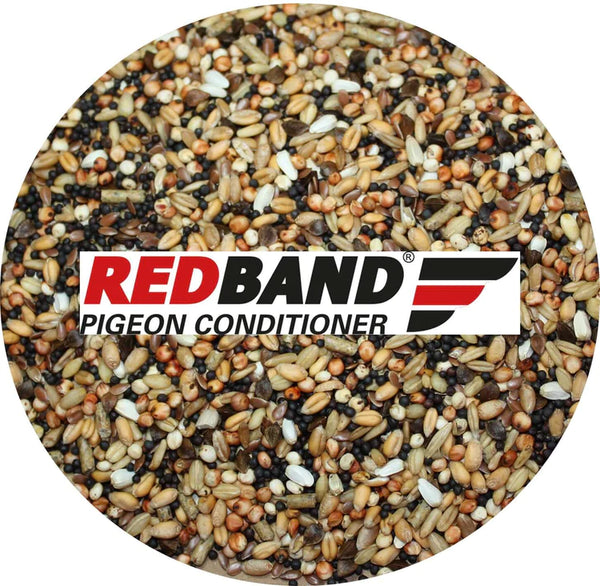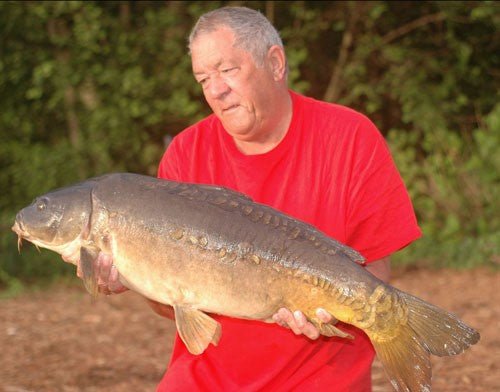
Red Band Revisited: Effective Bait Recipes for Fishing
Share
Our bait expert Ken Townley takes a look at one of our principle carp and specimen baits, Red Band Pigeon Conditioner.
I thought this might be a good time to take a look at one of our principle carp and specimen baits, Red Band Pigeon Conditioner. Early autumn is the prime time to take full advantage of small micro seed blends as the fish put their heads down for a big feed prior to the onset of the cooler weather, heralding the arrival of winter.
There are several seed blends that call themselves pigeon conditioner but there is only one Haith's Red Band Pigeon Conditioner. It may not be the cheapest you'll find but it will certainly be the best!
Enough has been written over the years about Red Band to fill a book and many of the top writers on carp fishing have extolled its virtues. Baits experts such as Dave Moore, John Hallat, Rod Hutchinson, Tim Paisley, Dave Lane and many, many others have discovered that Red Band has produced the goods when other particles have let them down.
Red Band contains a selection of mini particles with the addition of aniseed oil as well as some very attractive mini pellets for added attraction. During the preparation stage some of the small grains actually break down almost to a mush and this actually encourages the prepared the seeds to begin fermenting.
Any bait carpet comprising thousands of tiny seeds and grains will help in promoting preoccupation, and mass baits like hempseed and groats are perhaps the best examples of single mass baits available. However, most anglers these days seem to prefer a mixed groundbait carpet, one that includes hemp products and maybe some groats, but which offers a wider variety. You can achieve such a blend by mixing together equal amounts of Red Band and Haith's Hempseed to create a blend of seeds, grains, cereals and pellets that is the perfect feed for attracting carp in numbers.
The seed blend fulfils all the important criteria we demand of a mini particle groundbait in that it is visual, smells good thanks to the aniseed oil content, ferments quickly and is nutritious. Best of all, it is inexpensive!
Here’s how to prepare it:
- Place the dry Red Band + Hempseed in a large saucepan.
- Now pour on boiling water to cover the seeds.
- After about 4 hours you will notice that a lot of the water has been absorbed so add more boiling water to cover the seeds once again.
- After an overnight soak the seeds are ready to be cooked.
- Place the pan over a high heat and bring the water to the boil.
- One the water is boiling turn down the heat to simmer and cover the pan with its lid.
- Simmer for about twenty minutes.
- Turn the heat up slightly and stirring continuously reduce the remaining water so that the seeds start to resemble a thick porridge-like blend. Take care not to burn the bottom of the pan!
- Allow to cool.
- Cover and leave in a warm atmosphere for 2-3 days.
- You will note that the gluten in the grains begins to leak out after 24 hours or so, and the longer you leave it the more it ferments and the smellier it gets.
This is Red Band + Hempseed during the boiling process. Continue the boiling so as to reduce the amount of water to form a thick stodgy mixture.
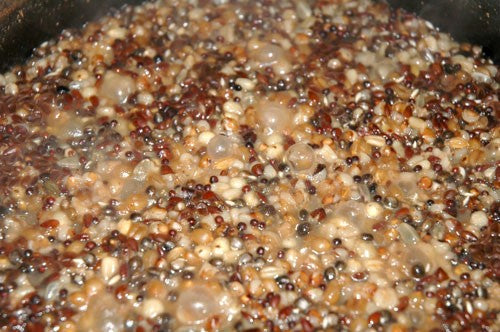
Carp go mad for this blend of tiny seeds and react to it very positively, so much so that at times they appear to become totally preoccupied with it. One of the best combos I have used is equal quantities of Red Band, hempseed and popcorn maize. This blend works brilliantly as the water temperatures start to drop.
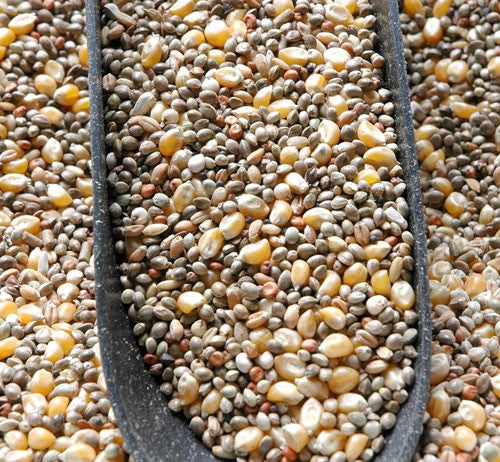
Preparation is pretty easy: after a 24-hour soak bring to the boil and then simmer for about an hour, adding boiling water as required. This overcooks the Red Band and it goes very soft and almost paste-like as the gluten is released. At the same time the mini maize softens and splits. Leave in a sealed bait box or bucket places in a warm room or airing cupboard. As it stands, the gluten is released to form a wonderful sticky mush that smells absolutely wonderful…to a carp.
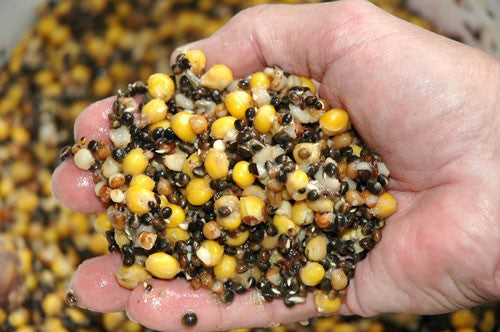
You can tweak this mix stiff further by adding boilie crumb, chops, pellets and even mini boilies.
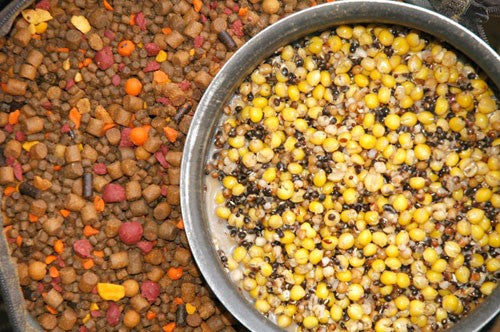
You will find that by adding the dry ingredients to the wet particle blend the whole concoction becomes gloriously stodgy.
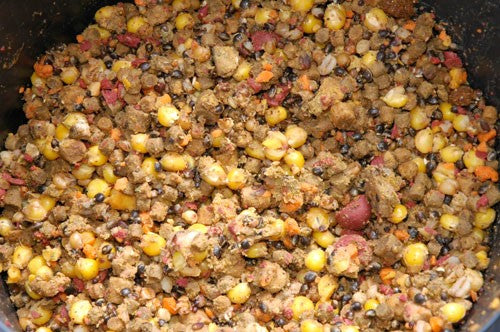
It can now be formed into a sticky groundbait that can be moulded around a Method Feeder.
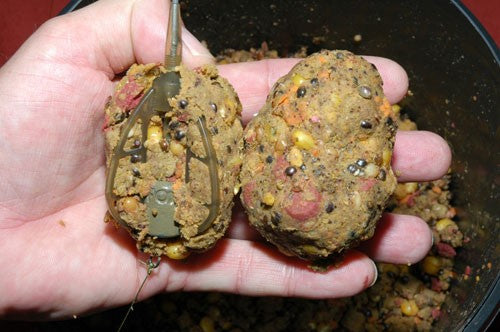
You can also dorm it into groundbait balls that can be fired out using a catapult.

For longer range fishing, i.e. beyond the range of a catapult, you can introduce the mix with a spod. However, you may need to add a bit of lake water to the mix in order to make it less stodgy, or it may not empty out of the spod when it inverts. This is quite a filling mix so always assess how many fish your are fishing for. It’s better to fish for one fish at a time rather than go after multiple hits so bait up on a little and often basis rather than introducing a massive bait carpet all at once.
Similarly, don’t put all your bait in one area. By all means place a couple of rods on a well-know fish-producing underwater feature that you know produces fish, but experiment by casting a roving rod around the swim. By the same token, always fish at least one hookbait off the main area of bait. This is the one that can pick up the big solitary cruisers that tend to avoid all the commotion caused by smaller fish going ape over the bait carpet. It’s as if these big girls want to feed but feel uneasy with all that feeding activity going on. A bait cast off to one side or in front of the bait carpet – anything from a couple of meters up to fifty meters – often catches the bigger fish with their guard down.
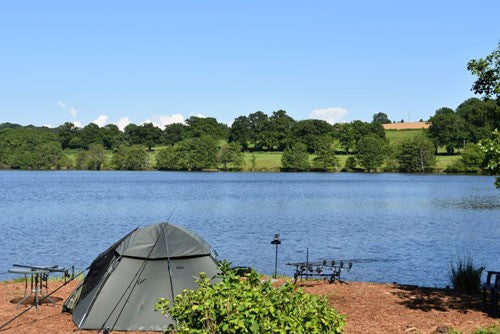
With autumn just a few weeks bringing with it perfect conditions for carp fishing, now is the time to start thinking about you baiting campaign and in my humble opinion Red Band will pay big dividends at this time of year.
Remember, RED BAND GIVES YOU WINS!!!
Written by Ken Townley

